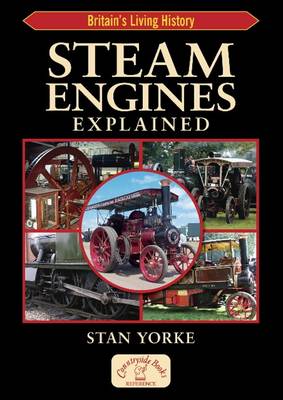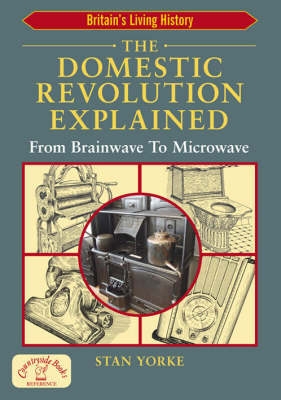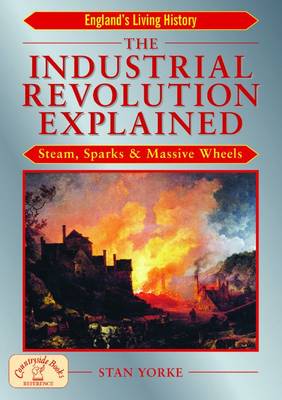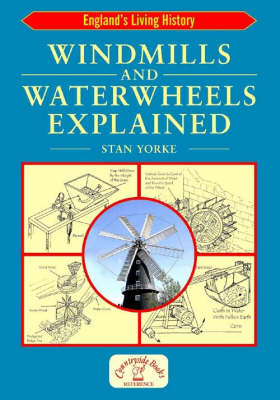England's Living History
6 total works
Using many photographs and line drawings, the author takes the reader on a journey back in time to see the origins of our railway system and describes in detail how and why these lines were built and run. It includes a list of preserved railways and railway museums open to the public.
The weather has always dominated our daily lives, and it remains our favorite topic of conversation. We all want to know what the weather will be for the week ahead in order to plan our days. But even with television forecasts it is hard to fathom the meaning of the weather charts; reliability is doubtful beyond the next 24 hours; and the area covered is not always a match to the place where you live. Stan Yorke shares this frustration. He has written a short guide that explains in simple language the basic weather principles, and it has a special illustrated section on how to read skies and clouds. The book allows us to properly interpret daily weather forecasts, and will give those who wish to, the confidence to set about predicting the local weather for themselves.
Steam engines, with their hissing pistons, revolving wheels, and smell of oil and coal smoke, have an irresistible attraction for many of us. The realization that steam could be used to power machinery became one of the great Eureka moments of history - comparable to the discovery of iron and the invention of the printing press. It was steam powered engines of all kinds that drove the vast industrial expansion during the nineteenth century. They featured in almost every aspect of life. They made possible the excavation of deep mines, the forward thrust of ships though the oceans, and the propulsion of trains along the tracks of the world's railways. In this book Stan Yorke explains the history of the steam engine and the enormous variety of uses to which it was put. There are over 100 photographs plus detailed diagrams by Trevor Yorke. There is also a list of places where steam engines, restored to working order by the hard work and enthusiasm of endless devotees, can be seen today.
Today we take so much for granted, but it wasn't always so! Just a hundred years ago barely half the country had gas and very few had electricity, another hundred years before that and there were no utility supplies at all. Domestic life has changed so dramatically during this period that it can be fascinating to see just how we progressed. This easy to follow book is illustrated by over 160 photographs and drawings and is divided into three time zones.
The story of how machines changed the face of industry and farming in the 18th and 19th centuries. Highly readable text by Stan Yorke, backed by expert diagrams and illustrations from Trevor Yorke.
This illustration-packed guide provides a fascinating insight into the world of watermills and windmills - their history, how they work, who made them and why, plus much more.
It's easy to forget, but for many centuries waterwheels provided the only source of power available to man apart from animals and his own sweat. Used in the British Isles for at least 2,000 years, they were joined in the 12th century by windmills, both reigning supreme until the arrival of the steam engine in the 18th century.
Even then, as simple and reliable machines, many worked on into the 20th century. This extraordinarily long timespan has made them a key part of our history, deeply set into our consciousness, with almost everyone knowing what they are. But how many of us know what they did or how they worked?
This book sets out to explain just that.
Using easy-to-follow text, plus extensive drawings and photographs, Stan Yorke takes us on a journey of discovery. The book describes the various styles of mill, the process of grinding grain to produce flour, and looks in some detail at the way the energy of the waterwheel or the windmill's sails are used to power the machinery.
The explanations and illustrations are tied directly to artefacts that we can still see today. So this is not just a history book, but also a guide to the workings of these wonderful machines.
Fortunately there are some 400 restored mills that can still be seen in Britain today - many working, some even producing flour for sale. The book includes a list of the best places to visit, plus a glossary to explain any unfamiliar terms.
It's easy to forget, but for many centuries waterwheels provided the only source of power available to man apart from animals and his own sweat. Used in the British Isles for at least 2,000 years, they were joined in the 12th century by windmills, both reigning supreme until the arrival of the steam engine in the 18th century.
Even then, as simple and reliable machines, many worked on into the 20th century. This extraordinarily long timespan has made them a key part of our history, deeply set into our consciousness, with almost everyone knowing what they are. But how many of us know what they did or how they worked?
This book sets out to explain just that.
Using easy-to-follow text, plus extensive drawings and photographs, Stan Yorke takes us on a journey of discovery. The book describes the various styles of mill, the process of grinding grain to produce flour, and looks in some detail at the way the energy of the waterwheel or the windmill's sails are used to power the machinery.
The explanations and illustrations are tied directly to artefacts that we can still see today. So this is not just a history book, but also a guide to the workings of these wonderful machines.
Fortunately there are some 400 restored mills that can still be seen in Britain today - many working, some even producing flour for sale. The book includes a list of the best places to visit, plus a glossary to explain any unfamiliar terms.





